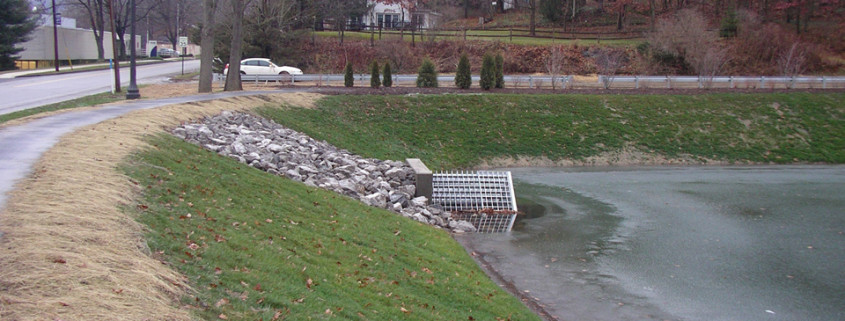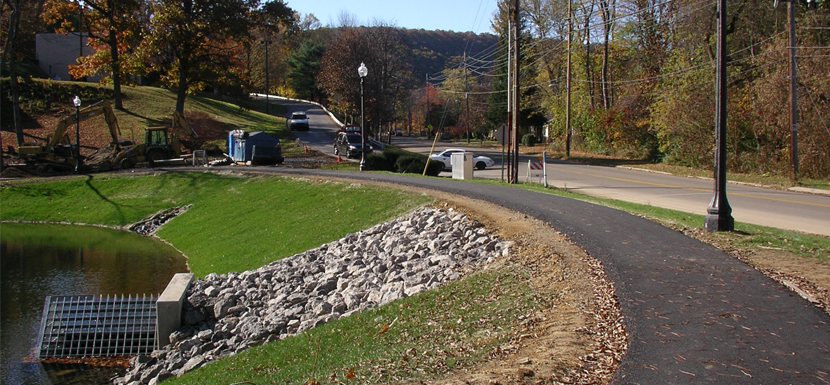Building Voter Support for Stormwater Fees
Many local officials realize the need to improve stormwater management to protect water quality, but fear constituents would oppose a new fee for stormwater services. Experience shows a transparent approach that involves community stakeholders can build consensus.
(These tips are excerpted from an article we published in the October 2015 issue of Pennsylvania Township News magazine and are used here with their permission. Reprints of the entire article are available upon request.)
Increasingly stringent stormwater regulations are causing municipalities to think about how they can fund badly needed stormwater system improvements in their community. Many municipalities are considering funding their program through user fees charged by a municipal authority, as authorized by Act 68 of 2013, but some municipal leaders worry that a new fee may be unpopular with residents and businesses.
Though stormwater utility fees are still largely unchartered territory in Pennsylvania (less than a dozen communities have established one here), the use of dedicated stormwater utilities and stormwater fees is a nationwide movement that has seen steady growth over the past four decades. Western Kentucky University reports that there are more than 1,500 stormwater utilities throughout the United States and Canada, serving communities as small as 88 people to more than 3 million. Their success in building consensus among constituents for stormwater fees can show local municipalities a path to approval in their own community.
HRG has used information from the Western Kentucky University study, the nationwide non-profit Water Words That Work, and several case studies published by the EPA (along with our own experience implementing stormwater authorities) to come up with several tips on how municipalities can build local support for stormwater user fees.
- Make sure you have identified and involved all the potential stakeholders – even those who oppose the formation of a utility – and form a stakeholder advisory committee. If you don’t attempt to address the concerns of your opposition in these committee meetings, they can come back to haunt you later when it comes time to pass the resolution. According to the EPA case studies, this is what happened in Dover, New Hampshire, and Huntsville, Alabama. Both communities had small advisory committees, but they did not engage all community groups. Though there was unanimous consent among the committee members to form a stormwater utility, the opposition of certain community groups who had not been represented on the committee ultimately drowned out their voices, and the municipal leadership declined to pass the resolution.
- Make the stakeholder committee an open forum where people feel comfortable expressing all points of view. Again, you want to deal with any potential obstacles proactively, rather than be blindsided by them in the final stretch. Stakeholder advisory committee meetings are more conducive to problem-solving and negotiating in a deliberative way than public meetings are. By including your opposition early in the process and giving everyone a chance to speak freely, you ensure that major obstacles to support will have been addressed before a public vote.
- Have your stakeholder committee discuss the stormwater program and what it can accomplish first. Don’t bring up funding till you’ve established a need for improvements and motivated people to support them. People need to know what they’re getting before they can be motivated to hand over their money.
- Clearly define the benefits of the program in all public outreach efforts. Tell people exactly what improvements you intend to make with the money you raise, and quantify the benefits of those improvements whenever possible. For example: “This project will reduce the likelihood of flooding along Main Street by 75%.”
- Show, don’t just tell. Visuals are particularly persuasive. Water Words That Work found that showing people photographs of how the fee would be used had the single most dramatic effect of any information provided in gaining approval of the fee.
- Choose your words carefully. Name the fee to clearly convey the service you are providing. “Stormwater management” is too vague and largely meaningless to the average person, but “clean water protection” has obvious value. In the Water Words That Work survey, “pollution control and flood reduction fee” tested better than any other term containing the words stormwater, authority or utility.
- Emphasize fairness. People generally believe that those who use a service most should pay more for it, so show them how your fee ensures that is the case. Explain why it’s important that non-profits pay the fee because they, too, contribute to stormwater discharges (often more than residents because of their large impervious parking areas). Tell them about credits that people can receive if they lower their stormwater impact by installing green infrastructure on their property. In general, people perceive fees based on actual impervious area to be the most fair and equitable (as opposed to a flat rate), but some of the communities EPA studied did successfully enact flat rates with effective public education about the reasons why that option was chosen.
- Demonstrate cost-effectiveness and be transparent about finances. If a stormwater utility is truly the best approach for your community, the numbers will convey that, and detailed economic studies are always an integral part of the planning process. Use those numbers to prove that the stormwater fee will better accomplish program goals than general fund revenue or any other option available. Voters can often be mistrustful of a government’s ability to use funds wisely. Being transparent about program finances (how the fee was determined, how it will be used) eases minds and reduces the chance of a legal challenge.
- Define this as a local solution to a local problem. Avoid talk about state and federal mandates or general environmental goals. If flooding is a recurring problem in your community, show how this program will reduce that problem. If pollution is a concern, talk specifically about keeping local waterways clean: the stream families teach their children to fish in, the lake where they go swimming.
Determining whether a stormwater utility is the most effective way to fund infrastructure needs in your community is a complex process that requires dual expertise in civil engineering and financial consulting. Unfortunately, some communities are afraid to even investigate the option because they believe their constituents will never approve of a stormwater fee. In communities where utilizing general tax revenue is not the best fit approach, research by EPA and others cited in this article shows that an effective public outreach program, which includes key stakeholder groups in the earliest planning stages, can be successful in persuading people to accept stormwater management fees.
 Adrienne Vicari, P.E., is the financial services practice area leader at HRG. In this role, she has helped the firm provide strategic financial planning and grant administration services to numerous municipal and municipal authority clients. She is also serving as project manager for several projects involving the creation of stormwater authorities or the addition of stormwater to the charter of existing authorities throughout Pennsylvania. Contact Adrienne about stormwater authorities.
Adrienne Vicari, P.E., is the financial services practice area leader at HRG. In this role, she has helped the firm provide strategic financial planning and grant administration services to numerous municipal and municipal authority clients. She is also serving as project manager for several projects involving the creation of stormwater authorities or the addition of stormwater to the charter of existing authorities throughout Pennsylvania. Contact Adrienne about stormwater authorities.





